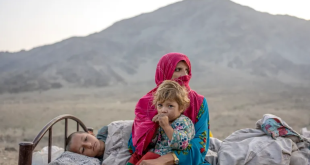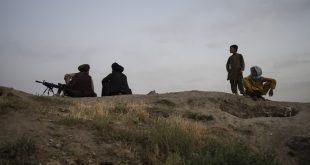By Dr. Jawid Ahmad Baktash and Eng. Kazim Naseri
Despite incredible improvements in health since 1950, there are still a number of challenges, which should have been easy to solve. One billion people lack access to health care systems 36 million deaths each year are caused by no communicable diseases, such as cardiovascular disease, cancer, diabetes and chronic lung diseases. This is almost two-thirds of the estimated 56 million deaths each year worldwide. (A quarter of these take place before the age of 60.)[1] [2], Afghanistan faces a significant challenge to creating a functional medical system in a post-conflict setting (although Afghanistan may be considered an “intra”-conflict setting). A low-income country recovering from decades of strife, the health care system has been in disarray for many years. Rebuilding the health care system in Afghanistan is currently being undertaken by a number of groups. This paper provides a review of what we term demand-side strategies for increasing access to health care. We are primarily concerned with improving access to health care according to the distribution of health centers and population density which are not properly managed in Kabul city of Afghanistan, health care facilities are not formalized due to accessibility of insufficient road networks and absence of the traffic system in Kabul. In contrast to research using GIS to assess potential accessibility measures, there have been Fewer studies that have examined the spatial relationship between the locations of potential Clients and detailed patterns of service utilization, often such patterns are examined at An aggregate level for health authority areas for population sub-groups in order to examine Variations in utilization rates in relation to distance or examined the accessibilities of population to the health services regarding distance, insufficient road networks, traffics and many other problems. In this paper we considered the distribution of population as a point region layer and analyzed it with health facilities layer in GIS application. This will be the primary assessment for Kabul province of Afghanistan which never has been carried on such assessment. [3][4]
- Study area:
There is no complete data available on existing health facilities. By combining several data sources, distribution pattern of the health facilities are depicted. It is observed that the health facilities are less evenly distributed to the informal residential areas. According to the developmental plan, A Basic Package of Health Services for Afghanistan (BPHS) has been expanded to reach 85% of the districts has been covered under contracted coverage. On the other hand the Afghanistan Household Survey (AHS) conducted in 2006 shows that only 65 percentage of population has access to a primary health care facility within two hours of walking distance. To improve coverage and reducing the distance for accessing health services, sub-centers and mobile centers are identified as logical approaches and in this regard from total of 312 planned sub-centers, 291 have been established while 21 are under the process of establishment. Additionally 54 new mobile health centers have commenced services. A number of the existing health centers have been upgraded to provide higher levels of service. Currently, in addition to more than ten thousand health posts, there are 1,688 health facilities that include sub-centers up to national hospitals. Within the new structure of the Emergency Preparedness and Response Department, 12 additional centers, for reporting diseases and suspected prevalence of disease, have been established in the country. With establishment of these centers, the total number of Disease Early Warning System (DEWS) centers in 34 the unplanted urban areas especially on the high elevation. They have many problems to access the health centers due to seasonal conditions. Table- 1 shows the population of Kabul in 2015 to 2016 according to districts and sex. From the total of 3678034 people there are (598146 household, 1774379 female, and 1903655 male) which the households indicates male and female.

Table-1 shows estimated population by type of settlement in 2008. It is estimated that approximately 3.1 million people live in the informal settlements out of the total population of 4.2 million in the city. Given the fact that the informal settlement areas are significantly larger than the total area of formal settlements the municipality could provide, it is not realistic to redevelop entire informal settlement areas by total clearance of informal houses as sometimes practiced before. Thus policy needs to be shifted to upgrading of informal settlement from the redevelopment to create formal settlements.

In case of health facilities, it is also not realistic, because the services are mostly concentrated on the formal areas but a very less percent is in the informal new build areas which could be a big disaster for the accessibility to the health center for many reasons, such as insufficient road network, heavy traffic system, and the type of hospitals. The services categorized in to two parts those are governmental hospitals are for 24 hour services but the other type private hospitals are not the same, which indicates the luck of services during night shift in across Kabul city. In the fig-1 we run a 5 km buffer zone around health facilities in order to just assume for enough services normally, but unfortunately, there are a lot of settlement out of this coverage zone, and therefore, they are without services, however, sometimes they can be covered in especial cases like operation in the center but for 24 hour normal health services there will be too much problem for them. They indicated settlement areas need much more attention for increasing health services (fig-1).

Figure 1. Show the 5 km buffer zone around hospitals in Kabul and the distribution of settlements.
The health facilities in Kabul province according to previous spatial referenced data as GIS layers has been surveyed by USGS, there are 68 health centers which specified as point regions. They are distinguished by types that include 24 basic health center (BHC), 12 districts hospitals (DH), 10 MCH clinics, 21 sub-centers and 1 mobile clinic (Fig-1). Of course, there might be some increase of private health centers which are not existed as GIS layer.

Fig-1 : health facilities based on population density
Fig-2 shows the population density and health services centers
- Methodology :
In the methodology, we used USGS GIS-based layers such as population, health facilities and administrative data layers for the purpose of finding population density trough special analyst tool and then analyzed it with health centers coverage areas. At the first stage, we found the Euclidean distance of health facilities point layer which is optimal method for calculating the Euclidean distance to the closest source cell, or source location, for each cells. And then, the population layer has been overlaid to the map to identify the accessibilities of people to the health services, based on distance from the source points. Which in the second stage we performed selection method in GIS (using selection by location) and categorized the regions in to two groups, 1st those region that can be covered by health services (total 691 regions), and the 2nd group, the regions which are extremely away from the health centers or even there is no health center in the near distance (total 120 regions) that could be relied on. They have been distinguished by separate color in the (Fig – 2) and showed according to the Euclidean distance analyses. The color ramp as much as getting closer to the darker color from light color the accessibility and services are getting less. [8]

Fig – 3 : Accessibility of population to the health centers.
- Conclusion:
We report on a study in which unannounced visits were made to health clinics in Afghanistan with the intention of discovering what fraction of medical professionals were present at their assigned post. This survey represents the first attempt to quantify the extent of this problem on a nationally representative scale. Despite reasonable development and investments in the health services have been done in Kabul city at recent years in stability but unfortunately still around 50 percent of the population don’t have access to the services or even they do it is very basic treatment. Nevertheless, there is no any documentation and survey as sufficient manner to take the attention of international donors, organizations and other societal associations in terms of improvement in this field. The information have been include in this paper could be an indicator of health services and its accessibility to the population. The result of the assessment is to put much more investment in the future as well as changing the way of recording, surveying, emergency site selection, and planning on new prospects by GIS application and computer based from primary paper based. As in the world this application has already proved its connectivity and productivity almost in every field but in Afghanistan it is just as a new method of investigation which will pave the way of development in the near future. One of the common problems in Kabul is accessibility and distance rather than quality of services therefore, managing, planning; performing is could be lead easily by GIS application. as the evidence and population density showed that some of the people are extremely away from the centers that could be a big challenge for them in an emergency situation that is why this survey shows that for the new and unplanted area we need to build and develop the health centers and services parallel to the population growth otherwise we will have many case of loss of life.
- References:
[2] P. Mitropoulos, and I. Mitropoulos, I. Giannikos, and A. Sissouras, “A biobjective model for the locational planning of hospitals and health centres”, Health care and Management Science, vol. 9, pp. 171–179, 2006.
[3] W. Luo, “Using a gis-based floating catchment method to assess areas with shortage of physicians”, Health & Place, vol. 10, pp. 1-11, 2004.[4] M. Guagliardo, C. Ronzio, I. Cheung, E. Chacko, and J. Joseph, Physician accessibility: an urban case study of pediatric providers, Health & Place, vol. 10, pp. 273-283, 2003.
[5] A. A. Murad, Creating a gis application for health services at Jeddah city, Computers in Biology and Medicine, vol. 37, pp. 879-889, 2007. [6] National Bureau of Statistics, “Annual Abstract of Statistics 2006”, Federal Republic of Nigeria, 2006. [7] A. A. Adebayo and A. L. Tukur, “Adamawa State in Maps”, Paraclete Publishers, Yola, Nigeria, 1999. [8] M. A. Husain, and A. B. Ismaila, “The routines and requirements for the creation of a geographical information system (GIS): The case of GIS database for the Water Board Corporation, Yola”, Environ: Journal of Environmental Studies, vol. 2, no. 6, pp. 47 -56, 2006. [9] National Bureau of Statistics, “Directory of health establishments in Nigeria, Federal Republic of Nigeria”, 2007.[10] P. A. Longley, M. F. Goodchild, D. J. Maguire, D. W. Rhind, Geographical information systems, West Sussex, England, 2nd
[11] Y. Chou, Exploring spatial analysis in geographic information systems. Onward Press, Santa Fe, 1997. edition: John Wiley and Sons, 2005. [12] A. A. Murad, A gis application for modeling accessibility to health care centres in Jeddah, Saudi Arabia, In GIS for Health and the Environment Development in the Asia-Pacific Region, edited by P. C. Lai, and S. H. Mak, Springer: Berlin, 2007, pp. 57-70. Afghanistan Times
Afghanistan Times




